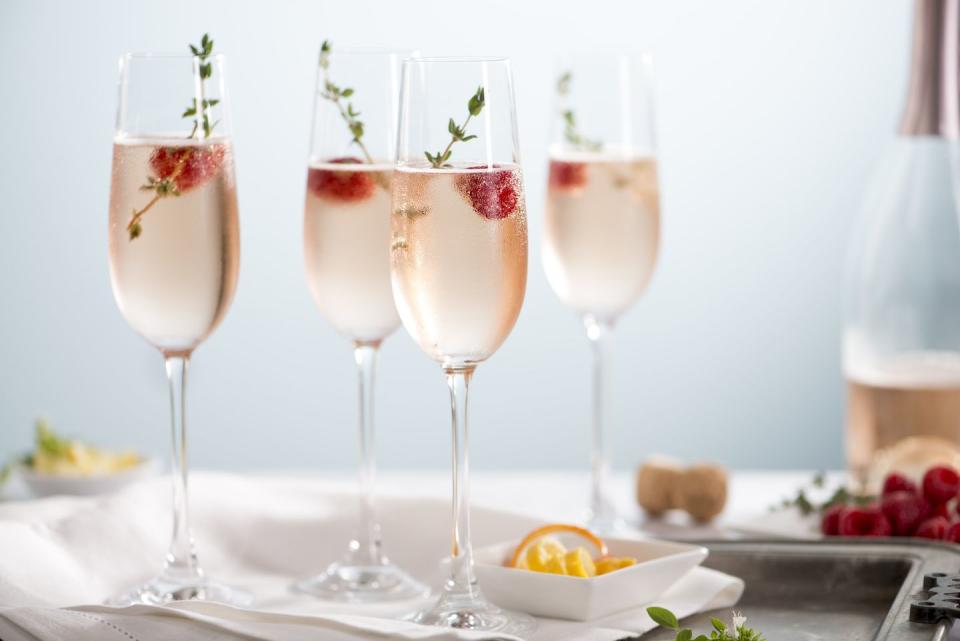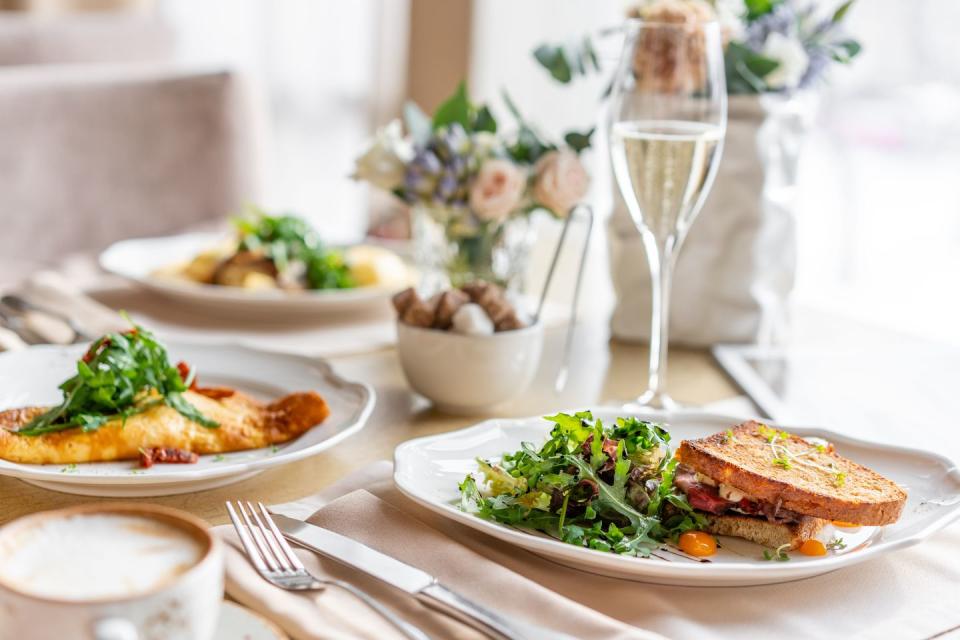The scientific reason why you should drink champagne at brunch

We can all appreciate the joy of a Mimosa as an indulgent breakfast treat, but scientists and gourmet experts have said that the morning is a prime time to drink champagne. Not only is it a period in which we have the cleanest palette, but it is also when our palettes are most awake to its flavours.
But that’s not the only reason. Academics Barry C Smith (University of London) and Ole Mouritsen (University of Copenhagen) conducted research, commissioned by Comité Champagne, into the science behind champagne and food pairings – and found that the chemical composition between some brunch foods and fizz make them perfect bedfellows. Many of our perceptions of which foods pair best with certain drinks come from tradition and social upbringing, but that doesn’t necessarily mean that they’re the best matches.

Umami – one of the five basic food tastes – is commonly associated with South-Asian food such as shitake mushrooms and soy sauce, but features in many meats, fish and cheeses. This savoury taste is a flavour enhancer, which works particularly well with champagne due to its high free glutamate levels. The two things work as catnip for one another, amplifying the taste of both the food and drink. The combination of ham and eggs, key elements of most brunch dishes, is rich in umami and when teamed with umami-receptive minerals of champagne is a perfect formula.
“We’ve long known that Champagne is an extremely versatile wine and pairs well with a whole host of dishes, but we wanted to better understand the science behind this, and what we discovered is fascinating,” said Champagne Bureau UK director Francoise Peretti. “The deliciousness of food is dependent on tastes and aromas but, while we recognise the basic tastes like salt and sweet, sour, and bitter, most people are often unaware that the satisfying savoury flavour we taste in most of our favourite dishes is down to umami.

"The key to producing intense umami flavours is combining glutamate-rich foods with items containing ribonucleotides," he explains. "Substantial amounts of free glutamate can be found in Champagne due to the ageing process, so when paired with other umami-rich dishes, such as the combination of ham and eggs in Eggs Benedict, it is enhanced further.”
Peretti says that once we accept that umami features in many dishes that we wouldn’t think to pair with champagne, we’ll see just how versatile our favourite fizz is. “With its variety of different styles (Demi-Sec, Zero Dosage, Blanc de Blancs, Blanc de Noirs etc) there is a Champagne to complement just about any dish,” he said. “Champagne is just as at home with oysters as it is with fish and chips.”
Follow Peretti’s advice and elevate your takeaway with the following styles:
Fish and chips with Blanc de Blancs Champagne
"This fact is often met with surprise, but Champagne is a great partner to classic fish and chips. I would recommend a vibrant and zingy Blanc de Blancs Champagne, a 100 per cent chardonnay style with citrus notes which matches seafood and cuts right through the batter, which will make the whole meal feel much lighter."
Burgers with Vintage Rose Champagne
"For summer and BBQ season, burgers are often on the menu, and for meaty meals with bold flavours like cheese, choose a Vintage Rose Champagne. The red-fruit aromas and full-bodied nature of this style are the a great match for the complexity of flavours in this dish, giving structure, body and strength to enhance this tasty takeaway."
Pork dumpling soup with Vintage Blanc de Noirs Champagne
"Vintage Blanc de Noirs will pair well with dumpling soup, or Sui Kow, which has a wonderfully flavourful broth and rich pork dumplings. Very umami! This style has aged in the Champagne cellars for a minimum of three years and is made exclusively from black grapes (typically Pinot Noir & Meunier), meaning its complexity and structure will enhance this delicious dish."
You Might Also Like


